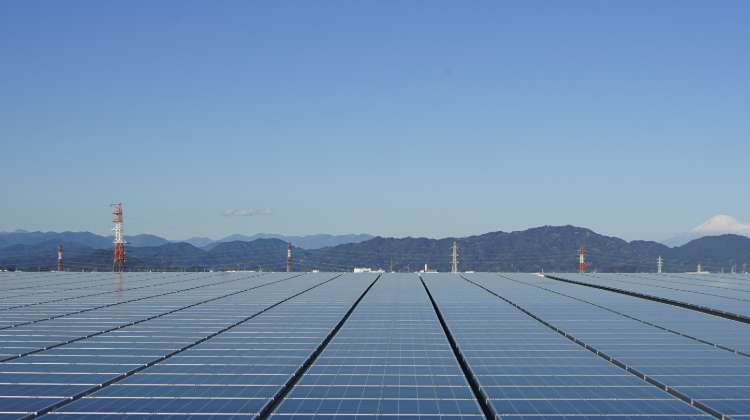
Connecting to the future
with renewable energy
Based on its Road to Zero global environmental plan, in the climate change area Sony Group is aiming to achieve net zero emissions over the lifecycle of
its business activities and products. A major contribution to that goal involves overcoming various hurdles in order to introduce and utilise renewable
energy sources.
Aiming higher: zero
environmental impact
In May 2022, Sony brought forward its target for achieving net zero emissions for the value chain, including scopes 1 through 3, from 2050 to 2040. At
the same time, the target for achieving net zero emissions in scopes 1 and 2 was advanced to 2030.
Certification by SBTi and joining the RE100 initiative
Sony Group was accredited by the Science Based Targets initiative (SBTi) for its May 2022 announcement of its value-chain-wide net zero target. Sony has also joined the RE100 global initiative that targets 100% of electricity from renewable sources by 2050. Sony was initially aiming for 2040, but in May 2022 brought its target forward to 2030.
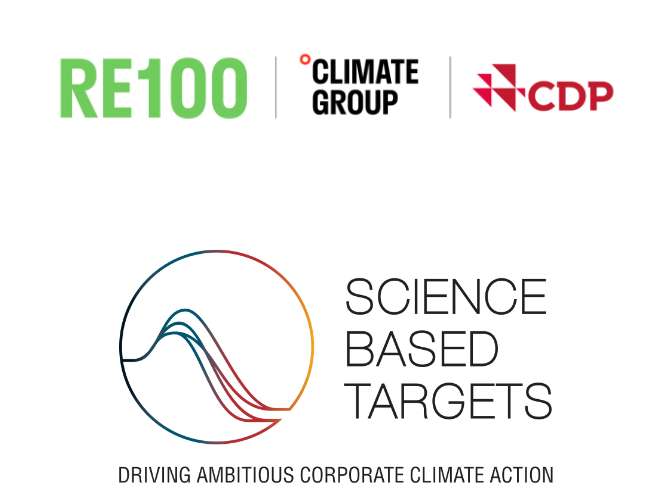
Toward zero environmental
impact: introducing new
innovations
Sony is prioritising renewable energy procurement from newly-installed renewable energy generation facilities, and where this is difficult, increasing its renewable energy proportion as far as possible by various means including proactively introducing solar panels, virtual PPAs*1 (power purchase agreements), renewable energy certificates, and self-consignment*2.
*1 A virtual PPA (Power Purchase Agreement) is a system in which companies that wish to use electricity conclude a long-term contract with a power generation company directly trading the ”environmental value” contained in renewable power rather than actual power.
*2 A self-consignment is a system whereby electricity generated by power generation facilities located in remote areas is transmitted to the company’s own buildings or those of its group of companies using the transmission and distribution network owned by the general transmission and distribution utility.
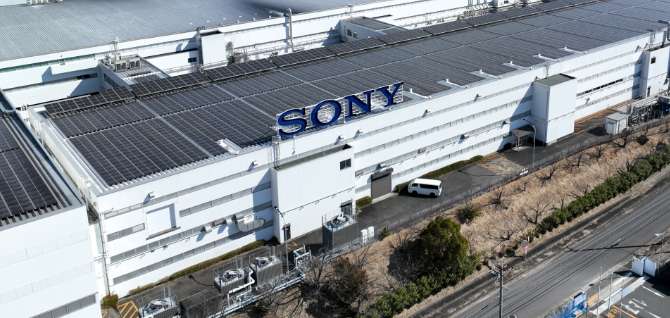
- Introduction of virtual PPA
Under a virtual PPA, the Sony Global Manufacturing & Operations (SGMO) Kohda production site in Japan is receiving the environmental value of approximately 2.4 million kWh of renewable-energy-derived electricity annually.
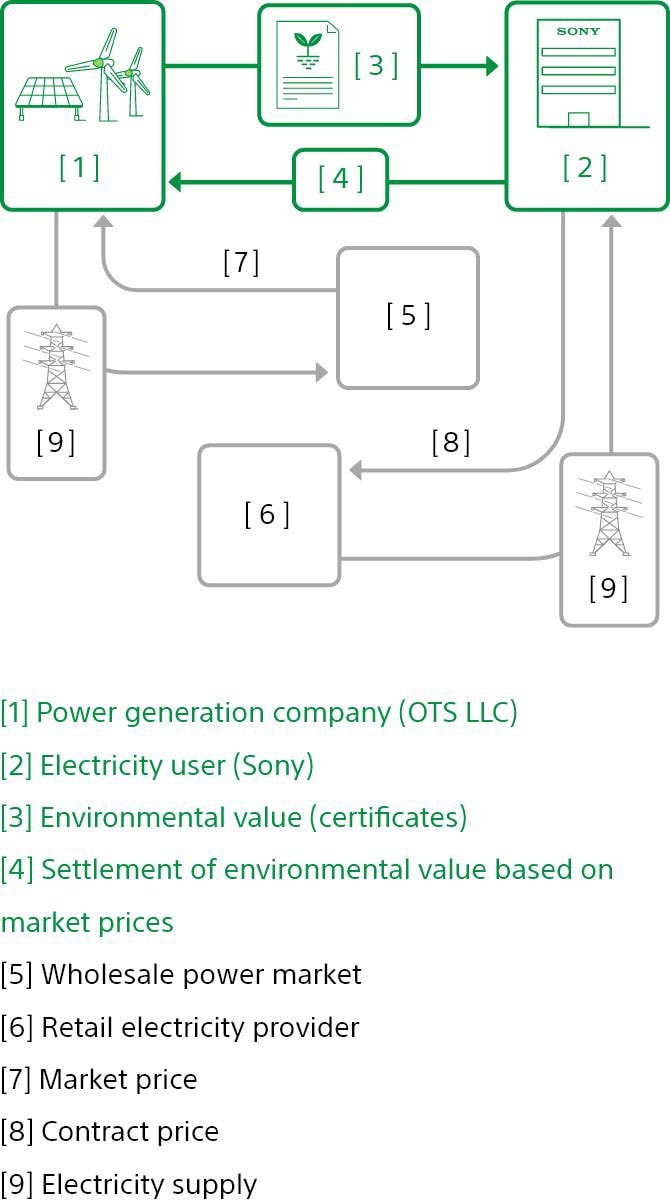
Self-consignment at Oigawa and
Kohda sites
February 2020 saw the introduction by Sony Music Solutions (SMS) of Japan’s first*3 megawatt-class (approximately 1.7MW) solar power self-consignment operation with on-site power consumption at its JARED Oigawa centre. Another self-consignment operation of approximately 0.4MW from off-site, without power consumption at the generating site, was introduced by Sony Global Manufacturing & Operations (SGMO) at its Kohda site.
*3 As of 21 August 2019, Sony research.
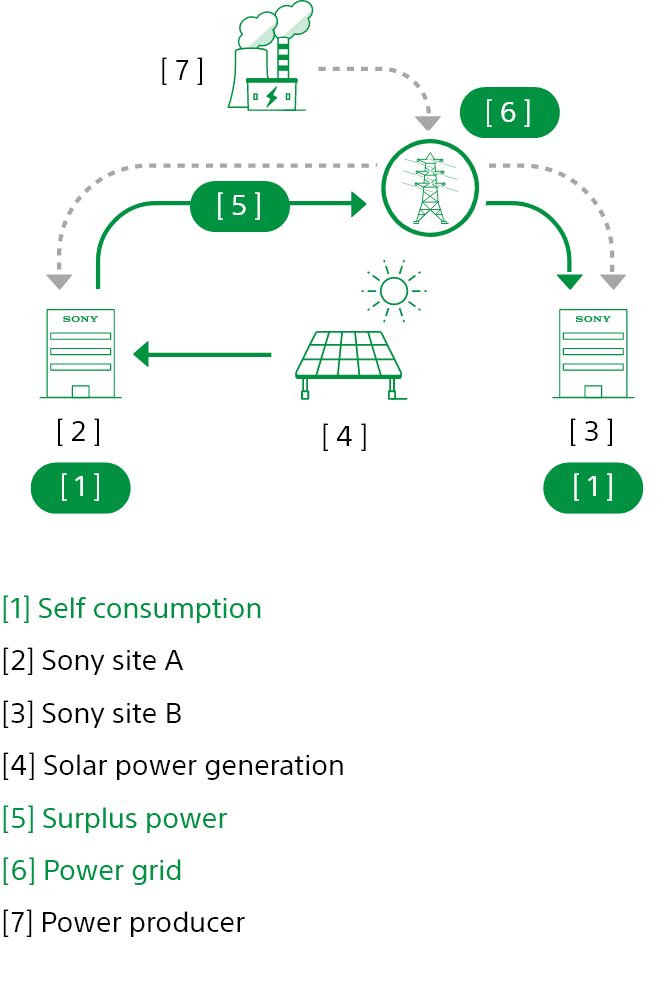
Expanding renewable energy
Sony is promoting renewable energy schemes including the installation of solar power generation capacity globally, taking into consideration the
surrounding environment.
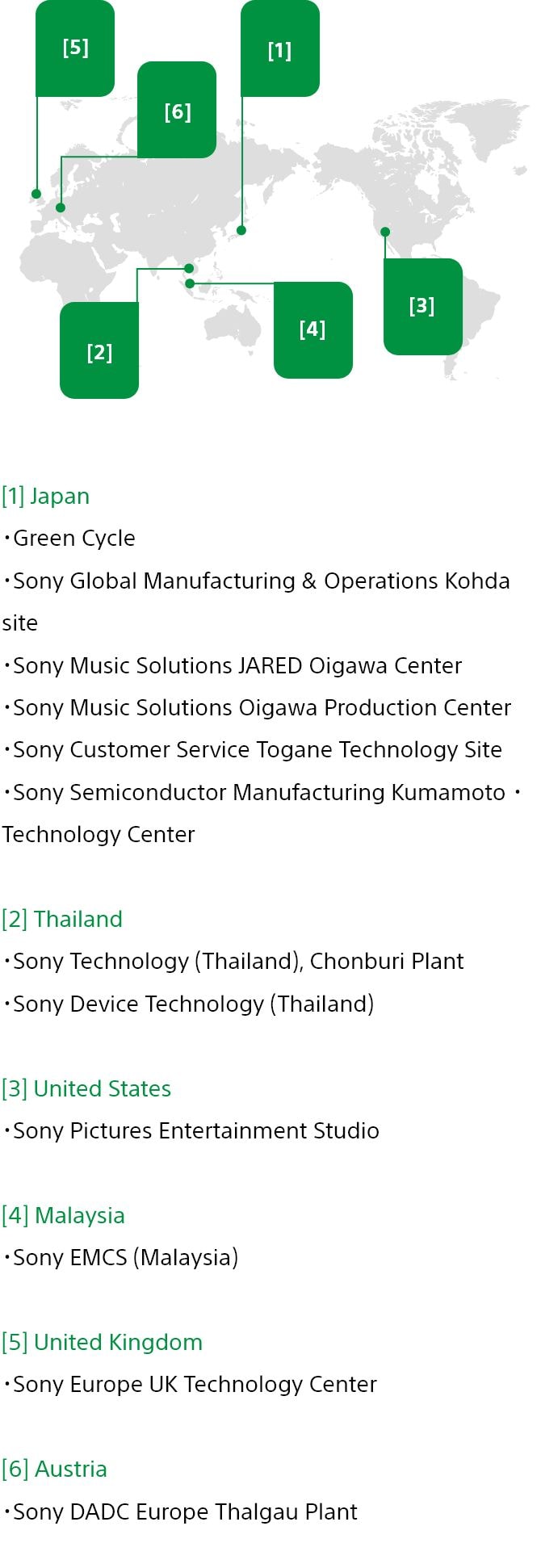
Major Sony sites with solar
power equipment installations
- Sony Pictures Entertainment Studio
The Sony Pictures Entertainment (SPE) Studio site at Culver City, California, USA has a 1.8MW solar power installation.
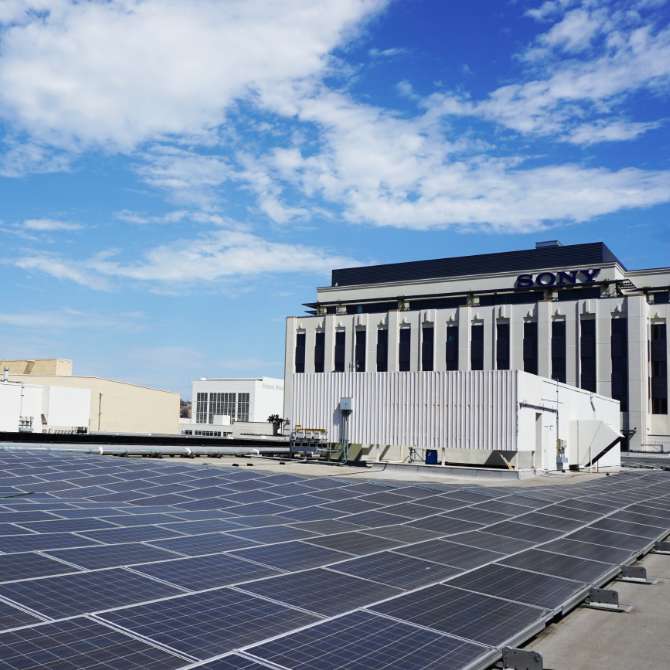
- Thalgau Site
The Sony DADC Europe plant at Thalgau, Austria features a 0.84MW solar installation.
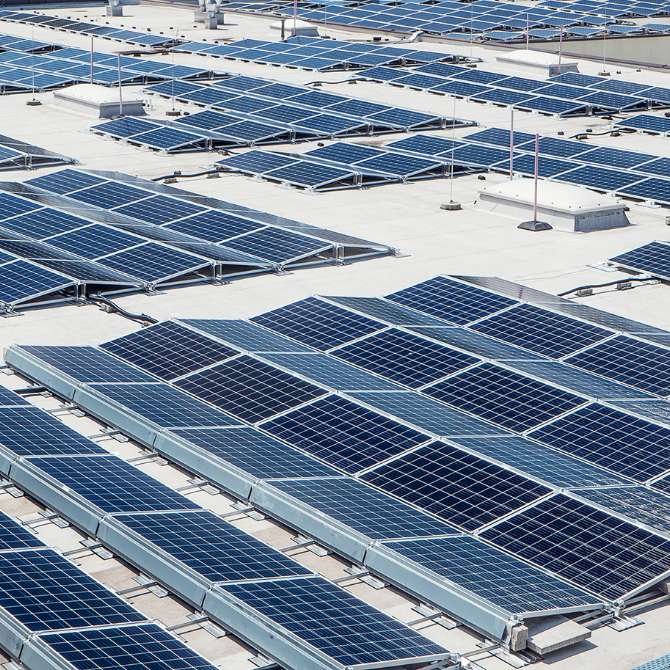
- Sony UK Technology Centre
The Sony UK Technology Centre in Wales, UK, run by Sony Europe B.V., has a 0.72MW solar installation.
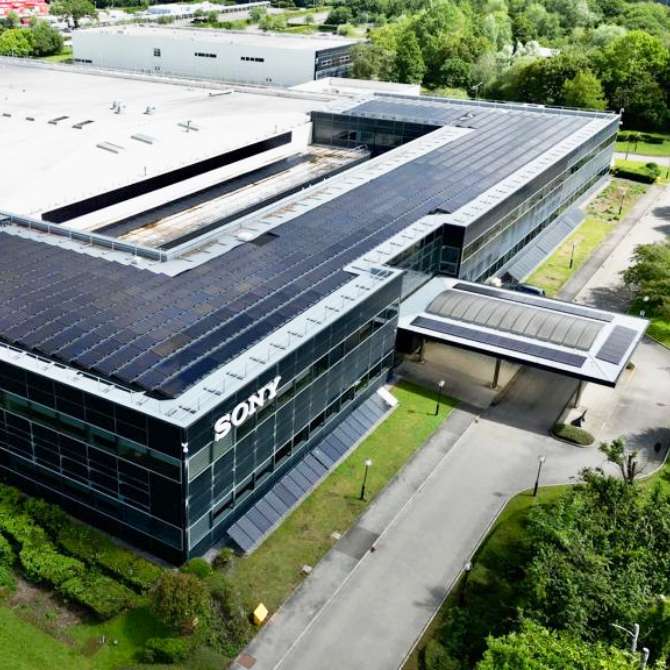
- Kumamoto Centre
The Kumamoto Technology Centre of Sony Semiconductor Manufacturing Corporation has a substantial 2.9MW solar installation.
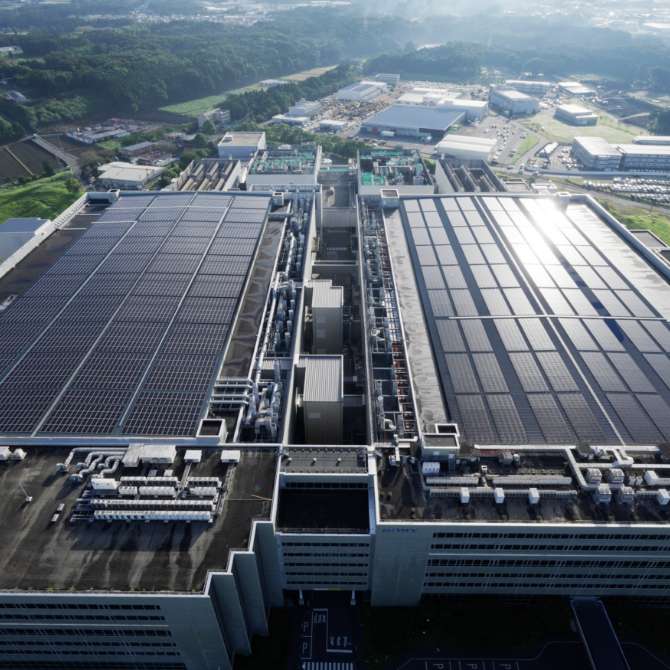
Interview
- Akihiro Hotta
- Director, Chief Financial Officer
Sony Technology (Thailand) Co., Ltd.
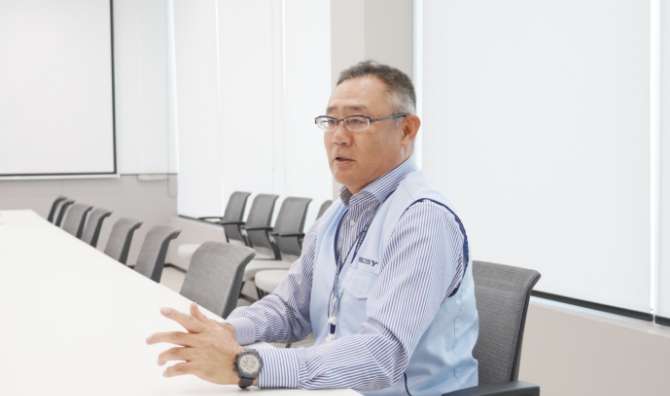
Climate change is the world's most critical environmental issue. Recognising this issue, Sony Technology (Thailand) (STT) has decided to reduce its impact by installing approximately 1.8MW of solar panels on the roofs of our STT manufacturing facilities. Although we started installing solar panels on the Phase 1 building in FY2019, we are committed to continuing our fight against climate change. With the installation of solar roof panels on the Phase 2 building in FY2023, our site's electricity supply capacity increased by 3.6 MW, increasing the total solar roof capacity to 5.4 MW, making it the largest solar panel capacity in the Sony Group worldwide (as of February 2024). In addition, by using International Renewable Energy Certificates for the remaining electricity consumption, STT achieved 100% renewable electricity use, contributing to the Sony Group's goal of 100% renewable electricity use. STT's next challenge with climate change is to achieve net zero targets in direct and indirect greenhouse gas emissions (scope 1 and scope 2) by 2030, and those in the product life cycle by 2040. Reducing our environmental impact while maintaining manufacturing is a difficult challenge, but as Chief Financial Officer of STT, I believe we should continue to invest in reducing our environmental impact, because protecting and preserving the Earth, which is the foundation of life, is our priority.

